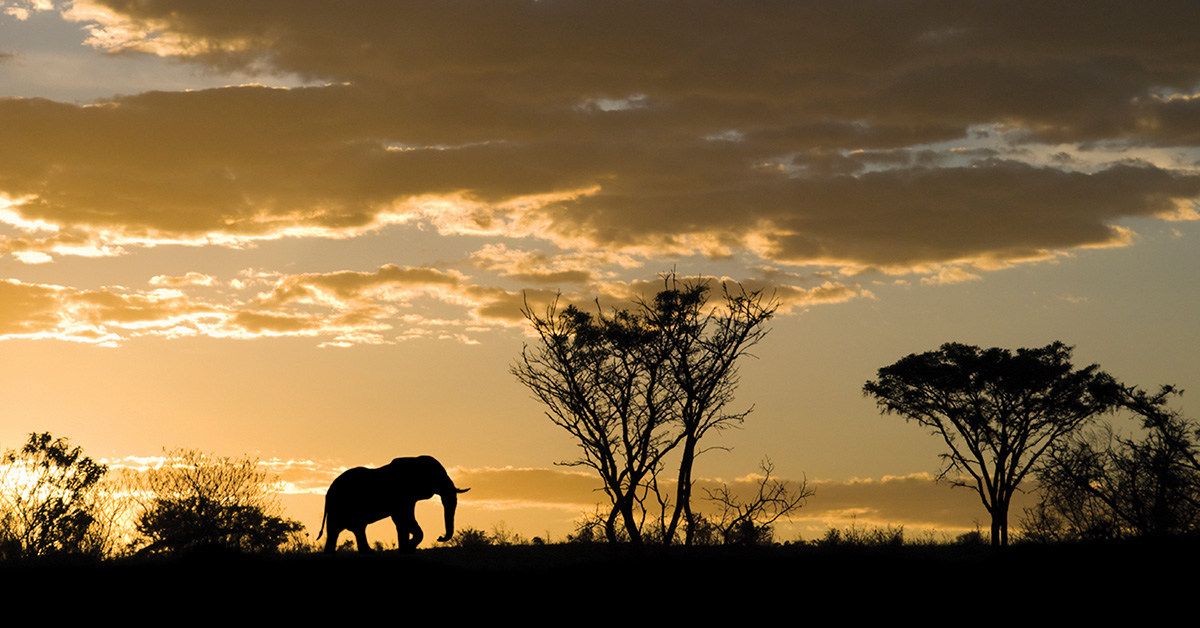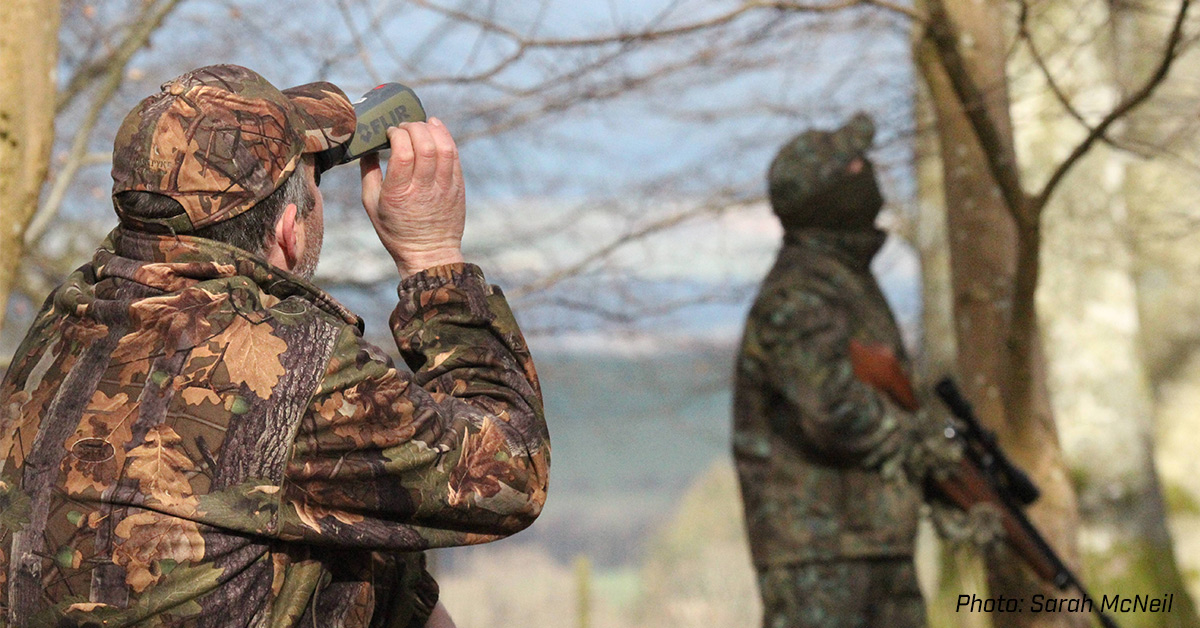A Perfect Tool for Finding Wildlife
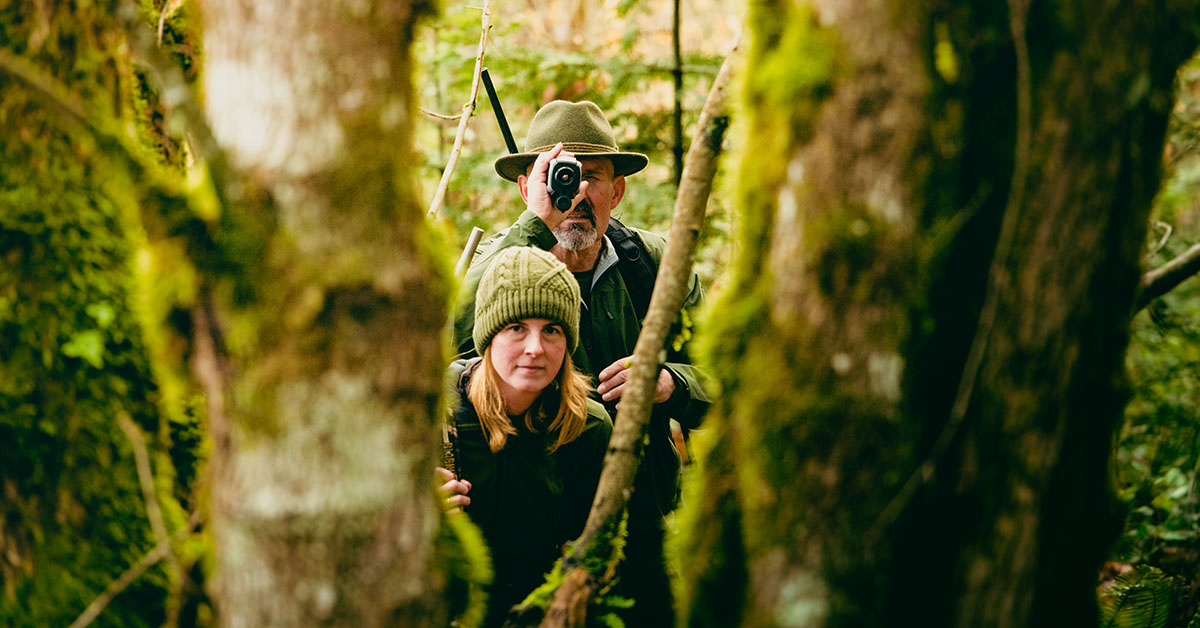
Tools for detecting wildlife have evolved a lot in the last century. Binoculars are now quite commonly used throughout the world, followed by light amplifying nighttime vision systems that can be used to spot animals at night. But even nightvision sometimes isn't enough for spotting animals in difficult to see conditions, which is why FLIR offers a range of ever-evolving handheld thermal monoculars for detecting wildlife.
Thermal imaging cameras see through darkness and ignore visual camouflage. Unlike all other nighttime vision systems, they require no light whatsoever to produce a clear image. Many warm-blooded animals are mostly active at night, using the cover of darkness to remain undetected, but will show up clearly in a thermal image, even in total darkness and in practically all weather conditions.
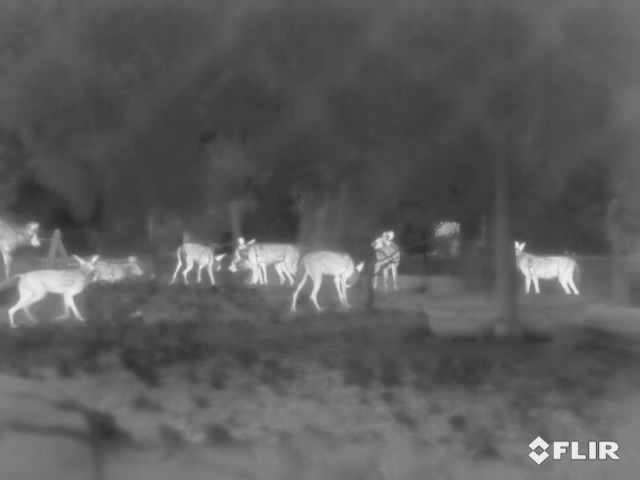
Spotted dogs are clearly depicted with the FLIR Scion OTM.
Thermal imaging cameras are widely used by professional documentary makers, wildlife enthusiasts, and hunters worldwide. Until recently they were extremely expensive, but with thermal imaging cameras like the Scout TK and Scion OTM, FLIR Systems is putting thermal monoculars within reach of nature enthusiasts and professionals alike.
First Tests - the TS-Series
The Swiss nature photographer and freelance wildlife journalist Michele Costantini was one of the first to receive a FLIR Scout TS-Series handheld thermal imaging camera (an early and now discontinued thermal monocular) for testing. He wrote a review of this new wildlife detection tool for the Swiss hunting magazine Jagd & Natur.
“Until a few years ago, a thermal imaging camera would cost more than a midsize car," explains Costantini. “In recent years, however, some affordable thermal imaging cameras have come on the market. Although the resolution of these thermal imaging cameras is lower than the resolution of most visual photo cameras, the high contrast image of a thermal imaging camera really is a great way to track game. With these devices you can see the outlines of animals and people very clearly even in total darkness and in light fog.”
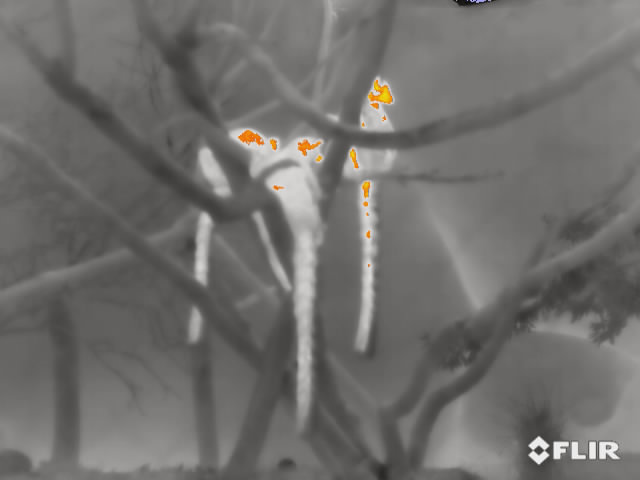
The graded fire palette highlights the hottest part of the image to quickly identify heat sources.
Latest Product - the Scion OTM
The latest outdoor thermal monocular from FLIR is the Scion OTM. Built around FLIR’s powerful Boson core, the Scion OTM produces 9 or 60 Hz thermal imaging and records geotagged video and still images for playback later. A rugged, IP67-rated housing and intuitive controls allow single-hand operation in harsh weather conditions, maintaining reliable thermal imaging in the most demanding outdoor environments.
Like all thermal imaging cameras, FLIR handheld thermal monoculars rely on emitted heat instead of light to create an image. The thermal imaging detector records minute differences in the heat emission and the thermal imaging camera then translates that information into a visible image. The fact that it relies on thermal contrast instead of visible contrast means that thermal imaging cameras provide perfect vision even when camouflage or darkness render normal eyesight completely useless.
Useful During the Day
Not only do thermal imaging cameras from FLIR provide unparalleled nighttime vision, but they also prove incredibly useful during the day. Costantini explains: “Many species of animals have evolved to blend in with their surroundings, making them hard to find for hunters or wildlife enthusiasts." However, "these camouflaged animals stand out quite clearly in the thermal image.”
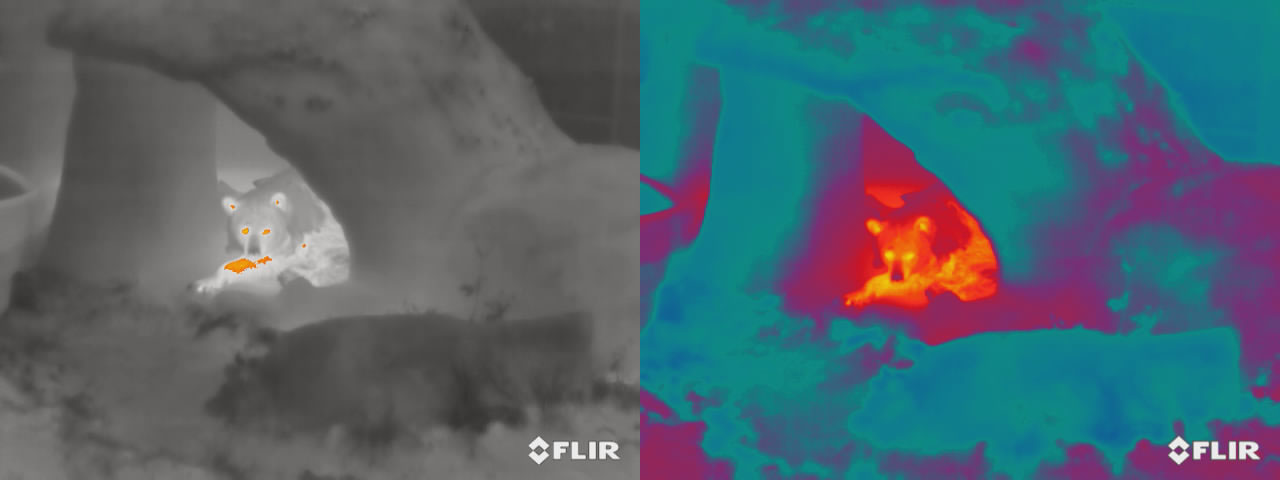
Camouflaged or hidded animals like this bear become visible with thermal, seen here in the graded fire (left) and lava (right) palettes.
Costantini discovered that there’s more wildlife in his area than he had expected. “Because most wildlife has very good camouflage many of them remain undetected if you use traditional means such as binoculars or light amplifying vision systems. As most hunters and wildlife enthusiasts know all too well it is almost impossible to track or trace young deer – also called fawn – in hay fields, to name an example. With a thermal imaging camera, however, even the most camouflaged animals become visible to the observer.”
In his experience, Costantini was able to spot just about every warm blooded animal with the FLIR thermal monocular he tested. “If you have a good viewing point you can find heat sources in meadows very quickly. And we found that not only warm blooded animals like cats and rabbits emit heat, ants and dung heaps also showed up quite clearly on the thermal image.”
Designed for Rough Outdoors Environments
FLIR thermal monoculars like the Scion OTM are built with IP67-rated housing to protect key hardware components in all weather conditions. Waterproof, compact, lightweight, and shock resistant, this rugged piece of equipment is perfectly capable of coping with rough outdoor environments. Intuitive controls and revamped internal menus allow quick thermal palette adjustments and provide easy access to new features such as picture-inpicture zoom, video recording, and GPS functionality.
The battery life lasts for up to 4.5 hours of continuous use, ready to capture any wildlife encounter with onboard video and image recording, and up to 60 Hz thermal imaging preserves details on moving objects. Internal storage and a built-in microSD™ card slot provide enough memory for the most demanding trips, and additional Bluetooth® and Wi-Fi capabilities allow simple file transfer between devices.
Thermal Monocular Best Practices
Thermal monoculars are designed for ease of use, but there are still a few tricks to learn. An good first start is understanding the difference between different thermal palettes, which you can learn more about in the article Your Perfect Palette.
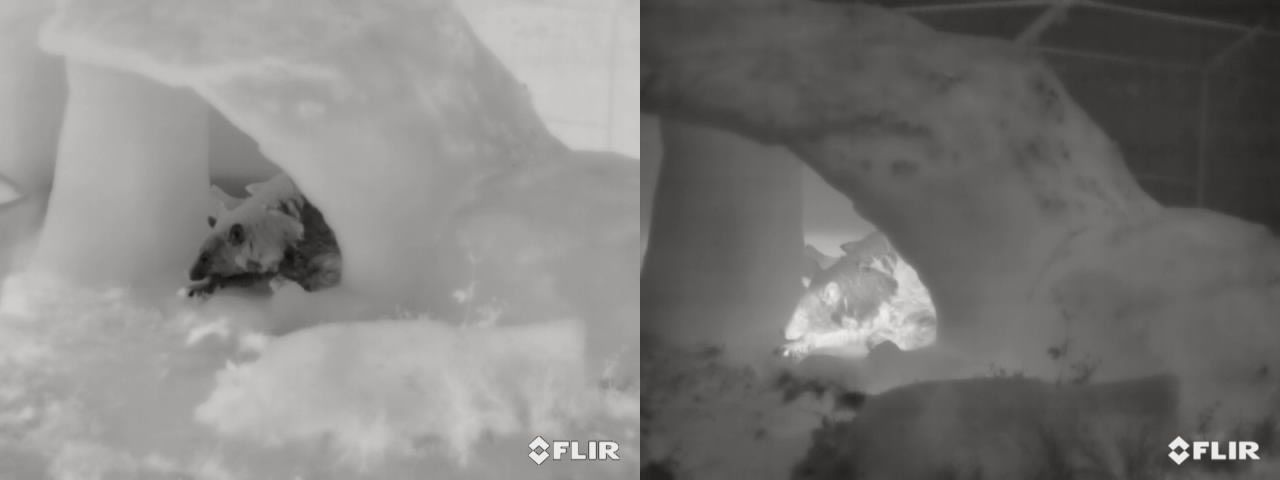
Monoculars like the Scion OTM have many palette options, including black hot (left) and white hot (right) for different applications and user preference.
It's also a good idea to know the limitations of your tool. Costantini thinks that during the day hunters or wildlife enthusiasts should still carry binoculars next to their FLIR thermal imaging camera. “If you rely solely on a thermal imaging camera, you might experience some unpleasant surprises. To put it simply thermal imaging cameras are extremely useful to spot wildlife and even differentiate which kind of animal it is, but to determine of what sex the animal is or what kind of health condition you still need binoculars.”
For hunters, the thermal imaging camera can be very useful after the shot has been fired as well. “Often the game isn’t killed immediately and it will bolt away. Often it will die later on, but sometimes it is difficult to find due to the camouflage. I had such a situation with a fox when I was testing the thermal imaging camera. Using the camera I could find it within seconds lying dead in the neighboring meadow. Although a thermal imaging camera will never replace a good bloodhound, yet this application is certainly interesting, especially if you already have the thermal imaging camera with you anyway.”
A thermal monocular may never replace your favorite four-legged friend, but it can be an invaluable tool for spotting wildlife in many challenging situations. Check out more handheld thermal optics from FLIR.
